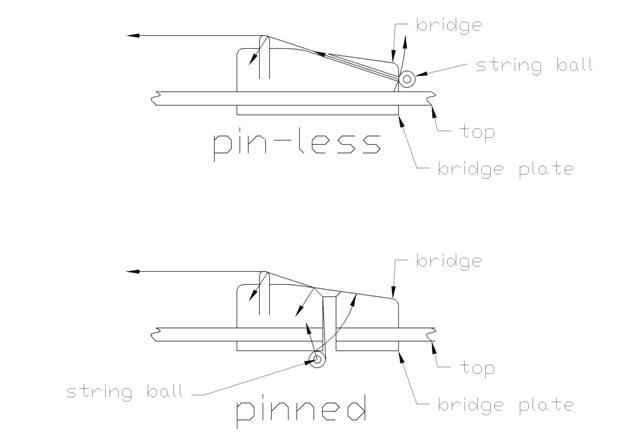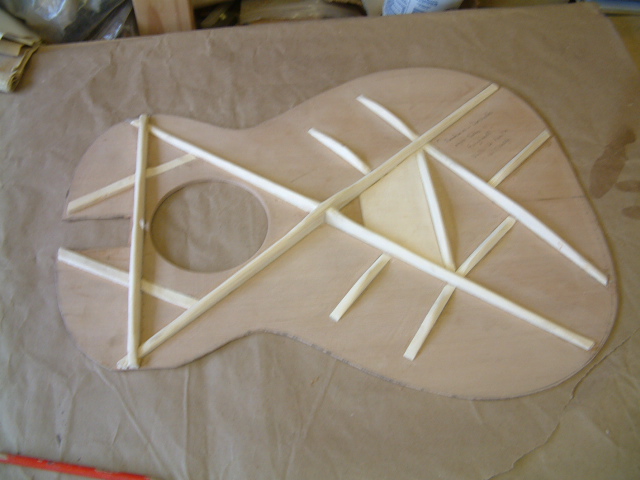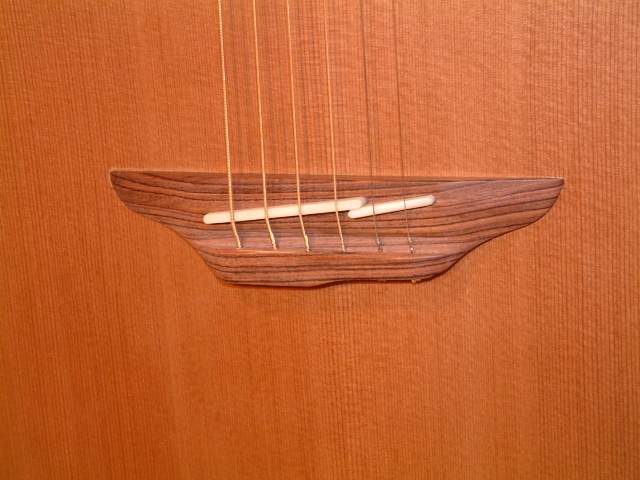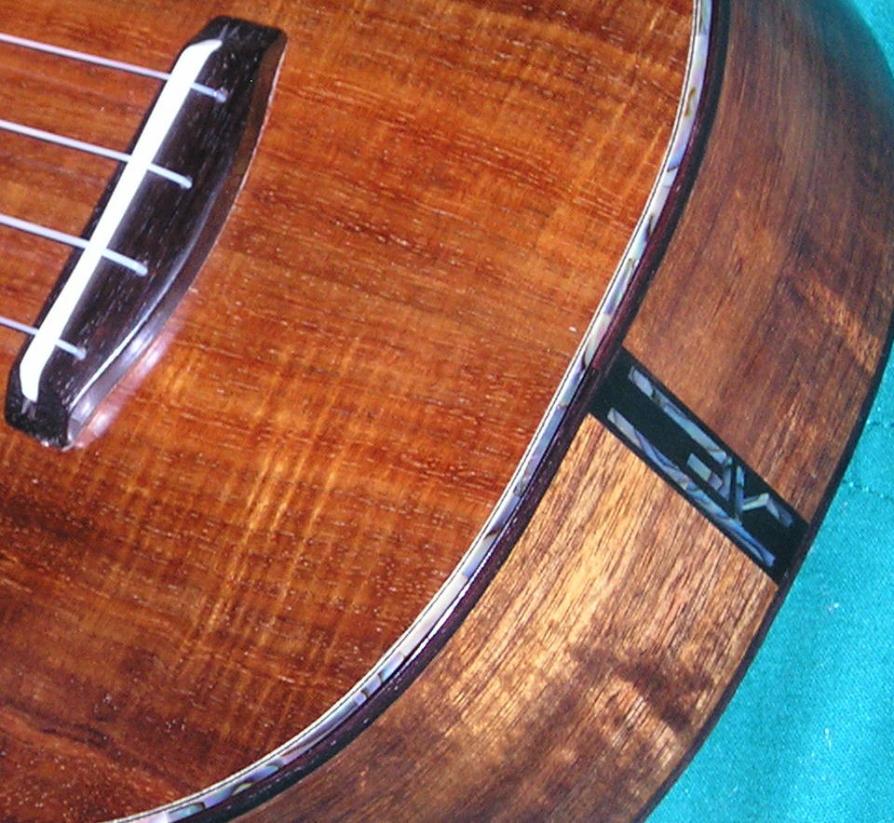[QUOTE=peterm] I only use pinless bridges....I use the J.Elliot style of pinless bridge and don't see any difference in the "pull" versus a regular bridge.[/QUOTE]
There is a big difference and that is that there is no force pulling the bridge patch and top towards the bridge (compression loading) as there is with a pinned bridge. There is some compression loading at the saddle on both types of bridges but this load is not true perpendicular to the top bridge plane. it is enough off perpendicular to be more of shear or rotating load than compression. On a pin-less bridge all the force beyond the saddle, however is in shear, meaning the load is constantly trying to separate the bridge from the top at the ball end of the strings. as apposed to a vast percentage of this force being in compression when using a pinned bridge. This means that the string are trying to rotate the bridge around the moment of the compression load created by the dowmward string loading of the saddle. Whether this is enough added shear to worry with may be debatable but without a doubt you are adding shear loading. Ovation and others that use pin-less bridges over-come the shear loading by bolting the bridge to the bridge plate with 2 bolts. this adds the compression to cance out the shear.


 )
)



